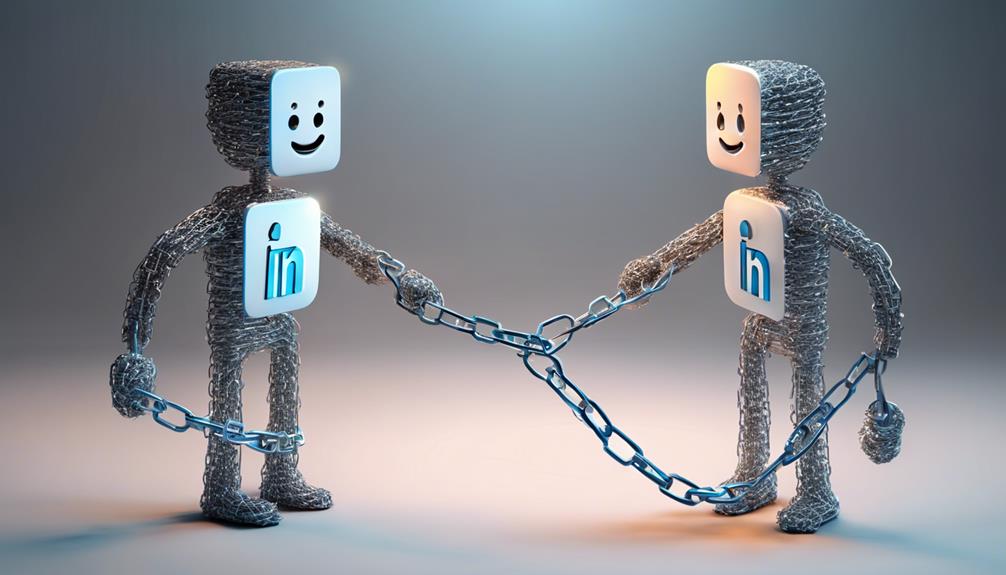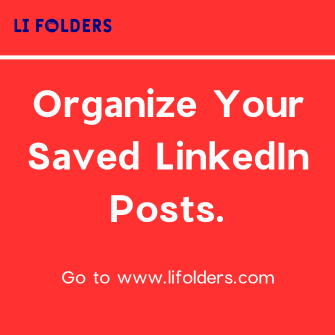
You can often tell if someone has disconnected from you on LinkedIn by noticing changes in profile visibility or restricted access. If you once had insight into their complete profile and activities, and now you can't see these details, it's a sign they've removed the connection. Pay attention to any unexpected decreases in your mutual connections or endorsements, as these might also hint at a disconnection. Regularly reviewing who's still in your network through the 'Connections' section under the 'My Network' tab helps you stay updated. Exploring further can provide deeper insights into maintaining a robust professional network.
Understanding LinkedIn Connections

LinkedIn connections form the backbone of your professional network, allowing you to expand your industry reach and access new opportunities. As you navigate this digital landscape, you're not just collecting contacts—you're building a community. Each connection you make opens a door to new ideas, experiences, and collaborations that enrich your professional journey.
Think of your LinkedIn profile as a living, breathing space where your career story unfolds. Every connection adds a layer, enhancing your visibility in your field and strengthening your sense of belonging in the professional world. You're not alone on this path; you're part of a dynamic network of peers, mentors, and potential partners.
Fostering these relationships can transform your career. Engage actively with your connections by sharing relevant content, commenting on updates, and participating in discussions. This isn't just about growing numbers; it's about growing meaningful interactions that could lead to job offers, partnerships, or invaluable advice down the line.
Checking Your Connections List
To effectively manage your professional network, regularly check your connections list for updates and relevant changes. It's a simple way to stay engaged and ensure you're not missing out on any opportunities to strengthen your ties.
When you open your LinkedIn profile, head over to the 'My Network' tab. Here, you'll see a 'Connections' section where you can view everyone you're linked to. Take your time scrolling through this list. It's not just about seeing who's still there; it's about reminding yourself of the relationships you've built and considering how you can further engage with your contacts.
If you notice someone seems to be missing from your list, don't jump to conclusions. It's possible they've simply changed their settings or are updating their profile. Remember, your network is about quality, not just quantity. Each person in your list is a doorway to new opportunities, advice, and support within your industry.
Maintaining an active presence on LinkedIn and keeping your connections list up-to-date makes you a visible, involved member of your professional community. It shows you're keen on not just maintaining, but also nurturing the relationships that could shape your career.
Reviewing Mutual Connections

Reviewing mutual connections can reveal potential networking paths and shared interests that might otherwise remain hidden. When you're navigating LinkedIn, it's not just about who you know; it's also about who your connections know. This layer of your network can be rich with opportunities and insights, giving you a stronger sense of belonging in your professional community.
Imagine discovering that one of your colleagues is connected to someone you've been eager to meet. This overlap isn't just coincidence; it's a bridge to new introductions. By exploring these mutual connections, you tap into a broader network that feels more welcoming and accessible. You're not an outsider looking in; you're part of a web of interconnected professionals.
When you realize you and a connection share several mutual contacts, it deepens the trust and rapport between you. It's like finding out you're both from the same hometown or attended the same university. These shared connections act as endorsements, making interactions more meaningful and your network more cohesive.
Observing Profile Access Changes
You might notice changes in who can see your profile and which profiles are accessible to you. This shift could be a subtle hint that someone has disconnected from you on LinkedIn. It's unsettling when you sense a change in your professional circle, especially if you value that sense of community and connection.
When you try to view a profile that was once open to you and find it restricted, it could indicate that the person has altered their privacy settings or removed you from their connections. This restriction is particularly telling if you used to interact frequently with their content. It's like walking into a room where you once felt welcome only to find the door suddenly closed.
You're not alone in feeling a bit adrift when these changes occur. It's natural to seek a sense of inclusion and support in your professional network. If you're noticing fewer updates from someone or can't see certain details anymore, it's okay to reach out directly. A simple message can clear the air, helping you understand whether it's a general privacy change or something specific to your connection. Remember, maintaining open lines of communication is key to nurturing and preserving valuable professional relationships.
Analyzing Endorsements and Recommendations

Analyzing endorsements and recommendations reveals how deeply you're valued within your professional network. When you look through these tokens of appreciation, you'll find clues about who sees you as an integral part of their own professional journey. These gestures aren't just casual clicks; they're affirmations of your skills and your impact on others.
If you notice a sudden drop in such endorsements, or if they've stopped altogether, it might signal a change in how you're perceived or how connected people feel to you. It's not just about counting how many you have, but also seeing who's behind them. These are the colleagues who appreciate what you bring to the table.
On the flip side, a steady flow or an increase in recommendations and endorsements can be very reassuring. It means you're still seen as a valuable player in your field. Each endorsement serves as a little nod of approval and belonging, reinforcing that you're not just part of the crowd but a key contributor.
Noticing Changes in Interaction
While examining your LinkedIn activity, it's crucial to notice any shifts in how frequently your contacts engage with your posts and updates. You're not just looking for likes or comments; you're gauging the pulse of your professional circle, ensuring you're still connected and valued within your network. If you suddenly see a drop in interactions from someone who was consistently engaging before, this might be a sign they've disconnected.
It's important to remember that reduced interaction doesn't always mean you've been disconnected. People's priorities shift, and their activity levels can vary for reasons unrelated to your relationship. However, if you're noticing less frequent responses to your messages or fewer acknowledgments of your achievements, these could be subtle indications that you are no longer connected.
You belong in a network that supports and interacts with your professional journey. If you feel a gap, consider reaching out directly. A friendly message asking how they've been can reopen lines of communication and clarify your connection status. This approach not only helps you maintain your professional relationships but also ensures you are an active and engaged member of your community, fostering a sense of belonging and mutual support.
Using Third-Party Tools

To enhance your LinkedIn experience, consider using third-party tools that track connections and interactions. These tools can help you keep a pulse on your network, ensuring you're never out of the loop. By monitoring who connects with or disconnects from you, you'll always be in tune with your professional circle.
Such tools often offer analytics beyond what LinkedIn provides, giving you deeper insights into your network dynamics. For instance, they might alert you when someone's engagement with your content changes, which can be a subtle hint that they've disconnected. This kind of information is invaluable as it helps you understand not just who is in your network, but how they interact with your professional brand.
Reflecting on the Implications
Reflecting on the implications, you should consider how the use of third-party tools might affect your relationships and privacy on LinkedIn. When you dive into these applications to see if someone has disconnected from you, you're entering a realm where personal data is handled differently than on LinkedIn itself. It's essential to understand that these tools can access and store your information in ways that might not align with your privacy expectations.
You're part of a community on LinkedIn, built on mutual trust and professional respect. Using these tools can sometimes feel like you're stepping outside that community, potentially jeopardizing the connections you've worked so hard to establish. Remember, the strength of your network isn't just in the numbers, but in the quality and depth of your relationships.
Moreover, think about how your actions reflect on you as a professional. Resorting to these tools might send a signal that you're not respecting the boundaries or privacy of others, which could deter people from wanting to connect or engage with you in the future. Always weigh the benefits against the potential risks and consider how your choices help you maintain the sense of belonging and trust that's so crucial on LinkedIn.
Managing Your Network Post-Disconnect

After someone disconnects from you on LinkedIn, it's crucial to assess and strategically manage your network to maintain its strength and relevance. You're not alone in feeling a bit shaken by this; it's natural to want to belong and feel valued in your professional circles. Start by taking a deep, reflective look at your current connections. Who truly aligns with your career goals? Who inspires you and who can you learn from?
Next, actively engage with your network. Comment on posts, share insightful articles, and congratulate peers on their achievements. This participation not only keeps you visible but also reminds others of your expertise and commitment to your field. It's about nurturing relationships, not just increasing numbers.
Don't forget to continuously expand your network. Seek out professionals and groups that resonate with your interests and aspirations. When you send connection requests, personalize your messages; let them see why you're interested in connecting and how you might support each other's growth.
Conclusion
In wrapping up, if you suspect someone's disconnected from you on LinkedIn, don't sweat it too much. Check your connections and interactions, but remember, it's not a reflection of your worth. Use this as an opportunity to nurture your remaining relationships and perhaps broaden your network. Stay proactive and positive; managing your connections thoughtfully can open doors to new opportunities and strengthen your professional presence online. Keep networking and keep growing!






